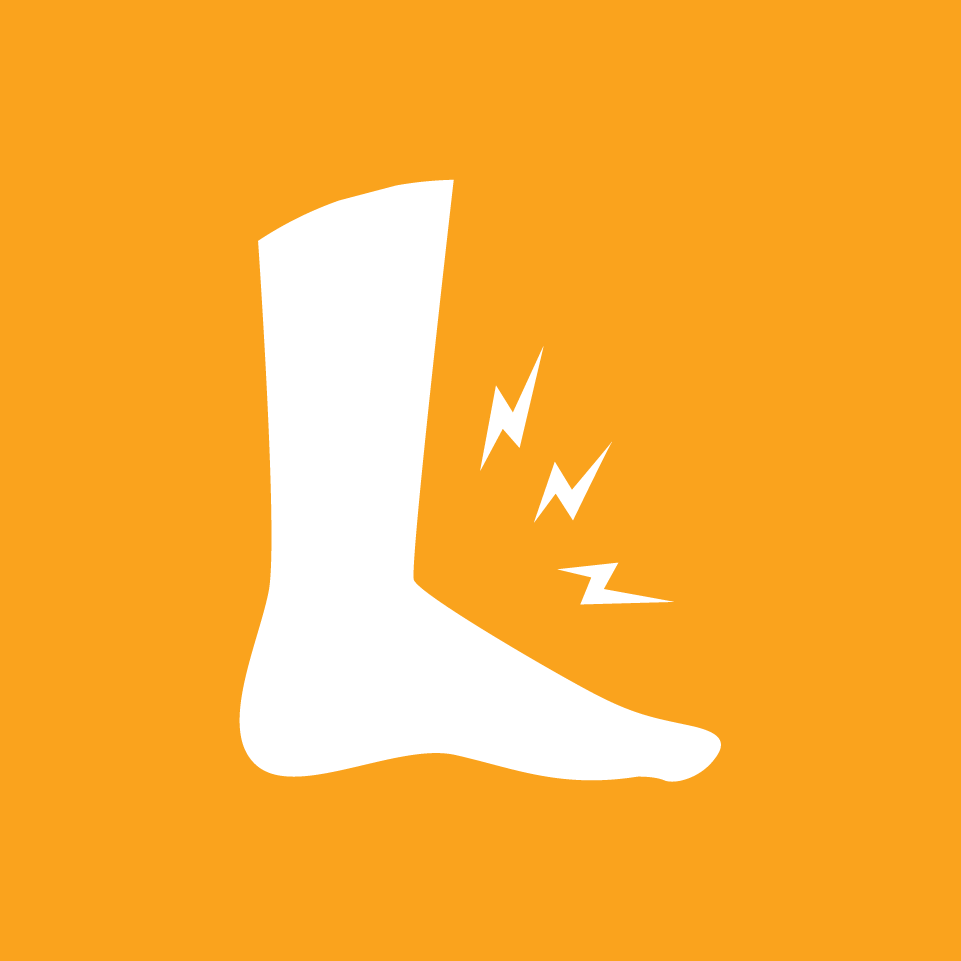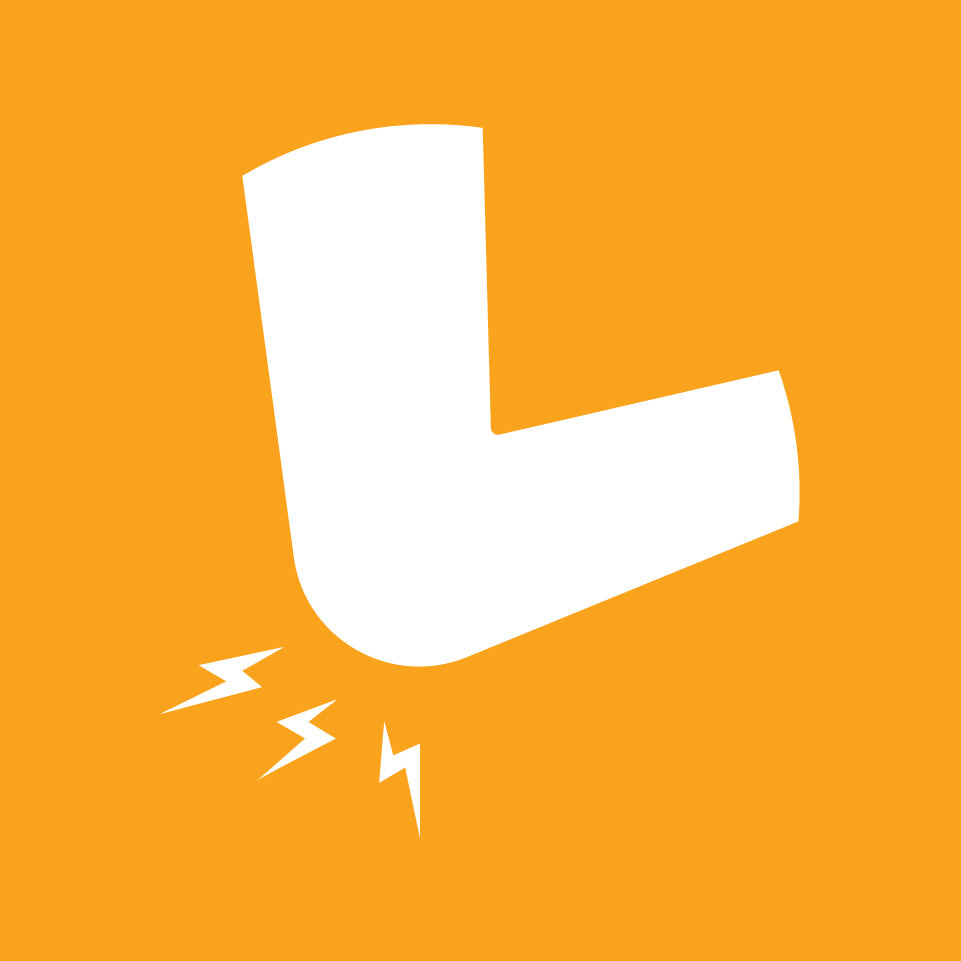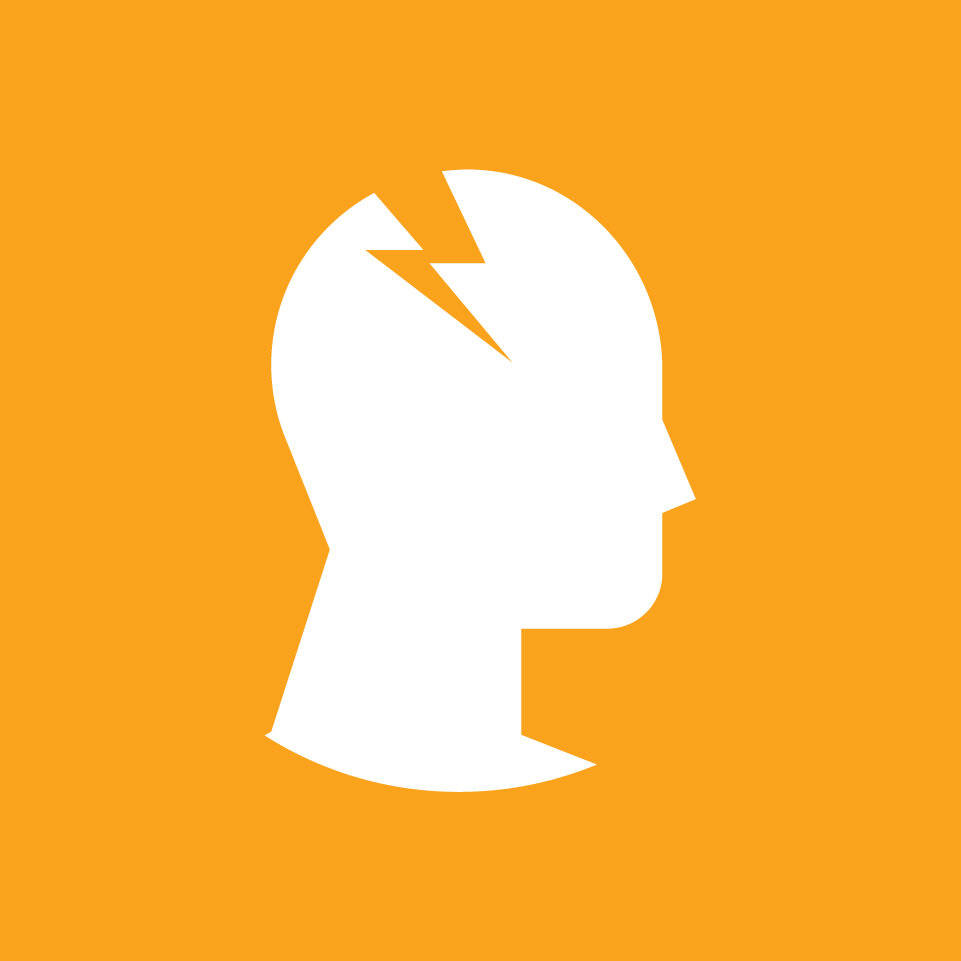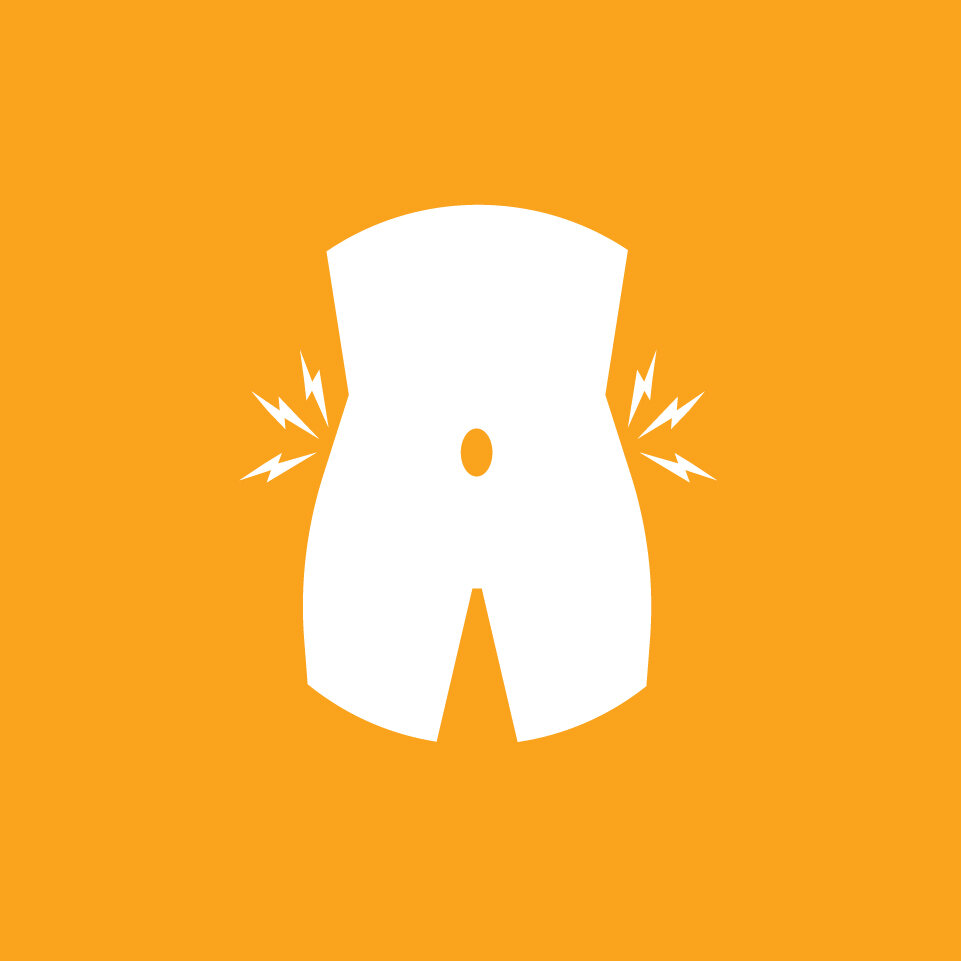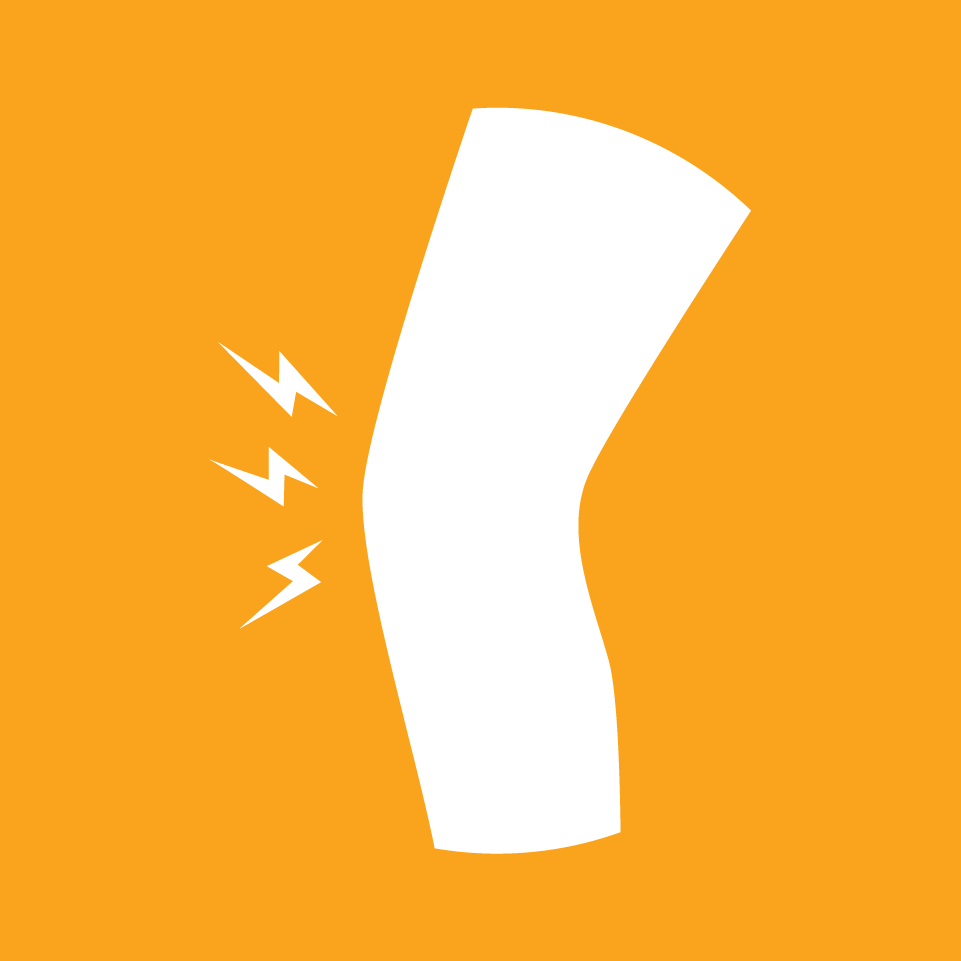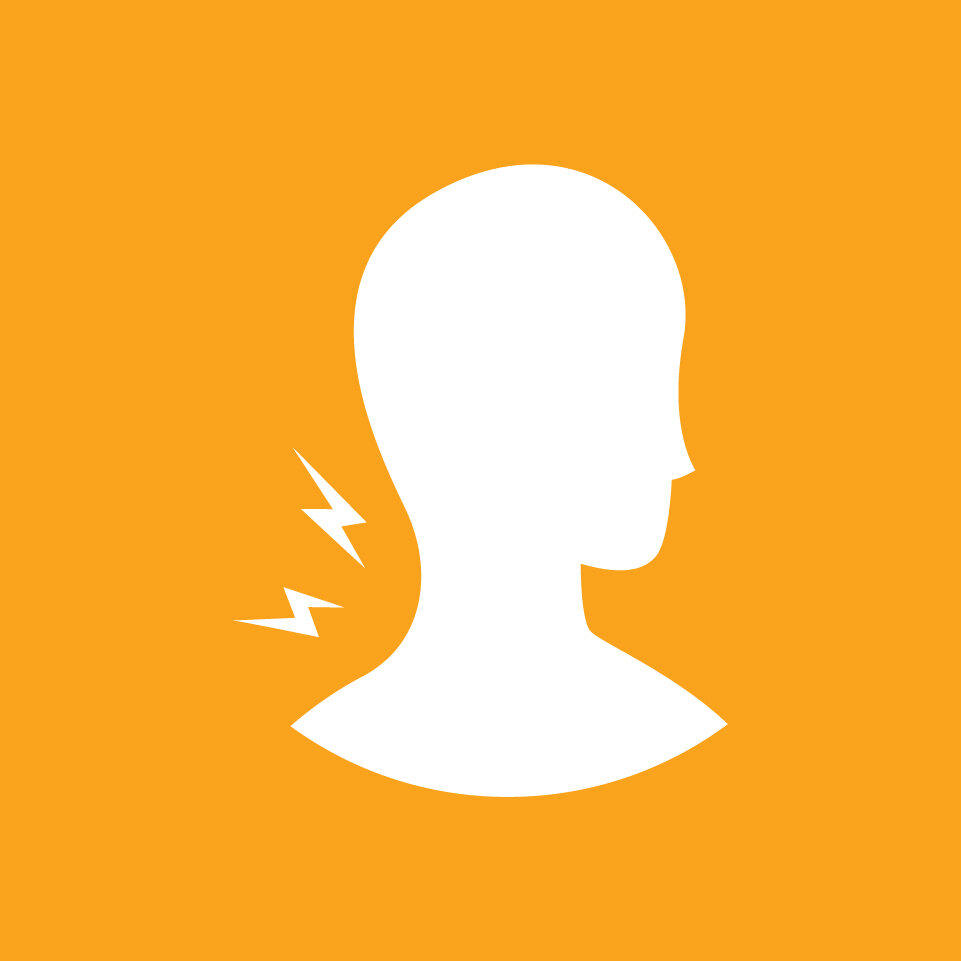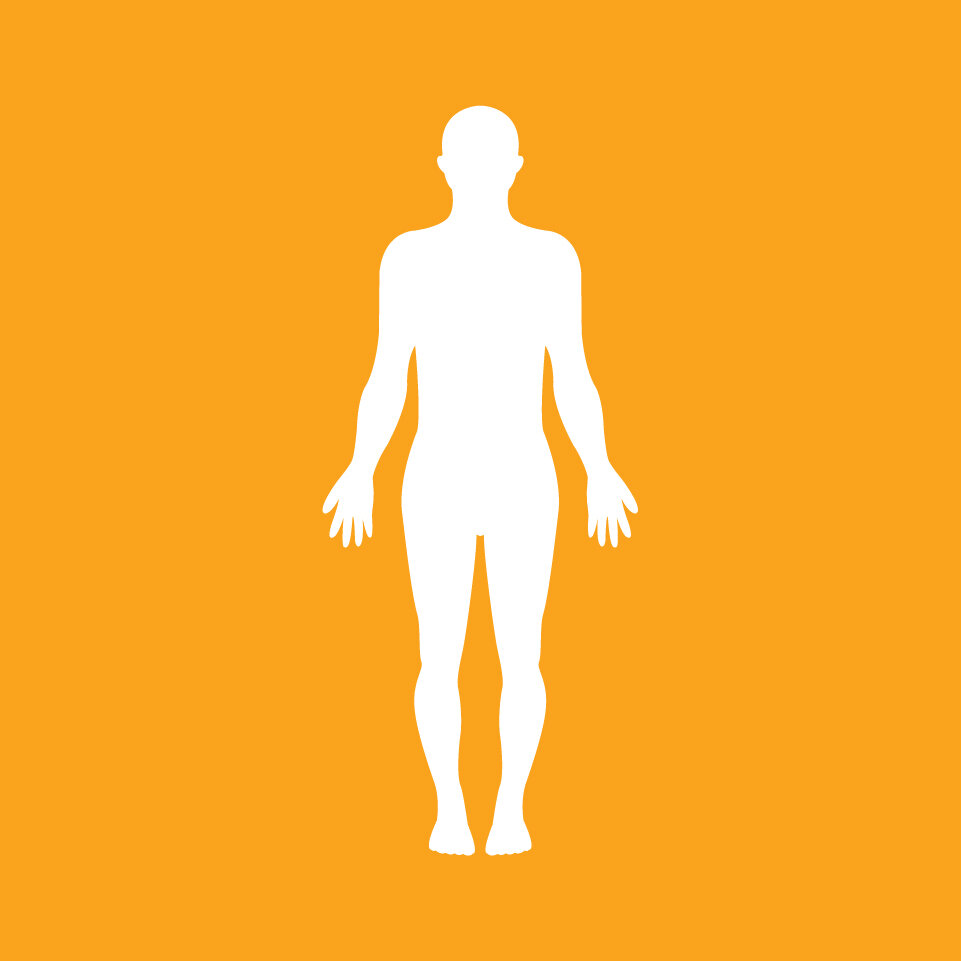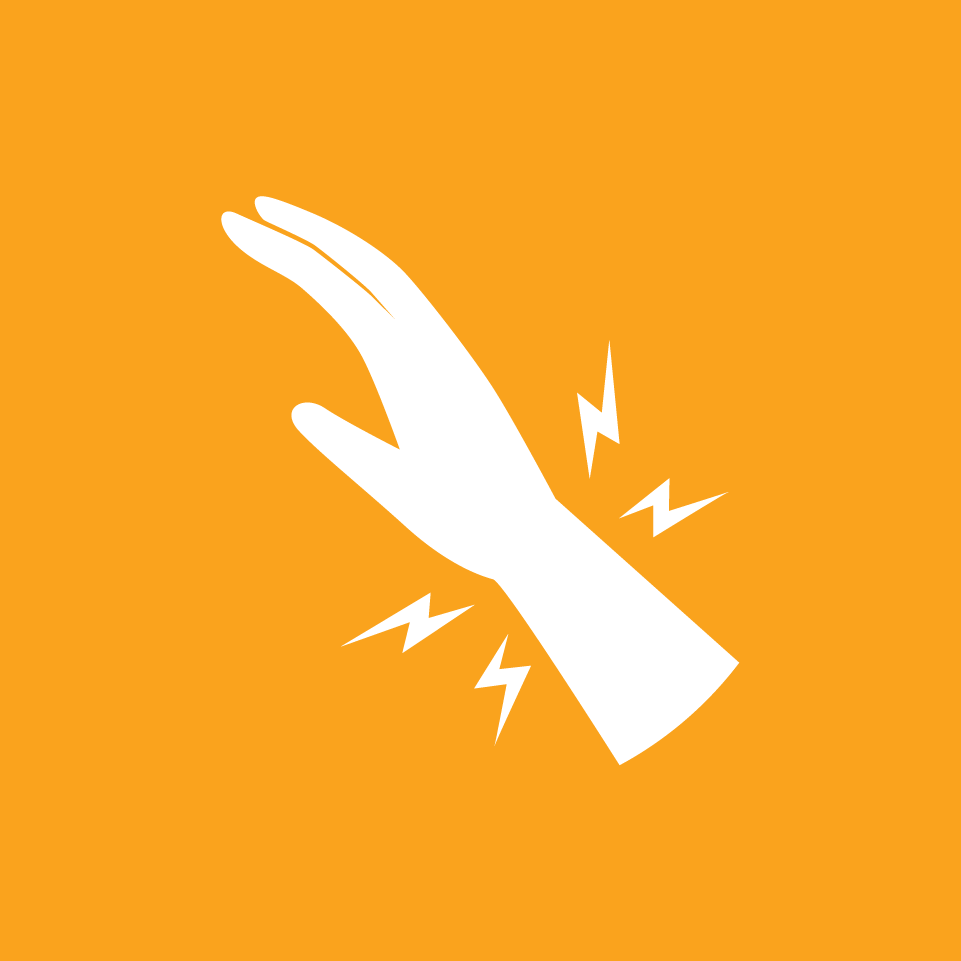Why does my low back or buttock hurt?
Low back or buttocks pain is a very common condition, and can be a result of an acute injury or may be associated with a more long-term injury, condition, or illness. Physical therapists are experts in helping patients understand why there is pain, things to avoid, and things to do to eliminate pain.
Possible reasons for low back pain and buttock pain:
Herniated Disc
A herniated disc, also sometimes called a bulging or protruded disc, occurs when the cushion-like cartilage (the disc) between the bones of the spine is torn, and the gelatin-like core of the disc leaks. Often mistakenly called a slipped disc, a herniated disc can be caused by sudden trauma or by long-term pressure on the spine. This condition most often affects people aged 30 to 50 years; men are twice as likely to be diagnosed as women. Repeated lifting, participating in weight-bearing sports, obesity, smoking, and poor posture are all risk factors for a herniated disc. The majority of herniated discs do not require surgery, and respond best to physical therapy. Physical therapists design individualized treatment programs to help people with herniated discs regain normal movement, reduce pain, and get back to their regular activities.
Your physical therapist will work with you to design a specific treatment program that will speed your recovery, including exercises and treatments that you can do at home. Physical therapy will help you return to your normal lifestyle and activities. The time it takes to heal the condition varies, but results can be achieved in 2 to 8 weeks or less, when a proper posture, pain-reduction, stretching, and strengthening program is implemented.
Your physical therapist will work with you to:
Reduce pain and other symptoms
Improve posture
Improve motion
Improve flexibility
Improve strength
Improve endurance
Learn a home program
Return to activities
Once your pain is gone, it will be important for you to continue your new posture and movement habits to keep your back healthy and pain free.
Spine Arthritis
Osteoarthritis (OA) of the spine is a condition that usually occurs with aging and is typically diagnosed after age 50. Its causes include injury to the spine, wear and tear on the discs of the spine, obesity, or an inherited tendency to develop OA. Sometimes the cause is unknown. OA of the spine may cause pain and stiffness; and make it difficult to bend over, perform weight-bearing activities such as walking, and accomplish daily tasks such as dressing and bathing. Your physical therapist will help you manage your condition, lessen your discomfort, and get moving again.
Your physical therapist will help you set goals to reduce your symptoms and slow the progression of the disease by reducing inflammation. You’ll learn how to safely exercise and continue to participate in your normal daily activities. Your treatment may include:
Exercise
Stretching
Symptom management
Daily activity training
Use of modalities: Treatment “modalities” such as heat or ice may be used to help manage your symptoms.
Manual therapy
Balance and walking training
Specialized braces or taping
Weight control
Remember, all cases of OA of the spine are different. Your physical therapist will choose the best treatment options for you based on his or her evaluation of your specific problem.
Spondylosis
In spondylosis your spinal joints don't move as well as they used to because of age-related changes in your spine, similar to arthritis. This can make it very painful to move because of decreased mobility within the spine itself. Your doctor may recommend physical therapy as part of your treatment plan because a physical therapist can help you maintain and increase mobility, learn ways to reduce pain, strengthen your spinal muscles so that they better support your spine, and stretch muscles that may be increasing nerve compression in your spine.
Physical therapy involves three main components: education, passive treatments, and active treatments. A physical therapist uses passive treatments to relax you and your body and to decrease acute pain or inflammation. They're called passive because you don't have to actively participate. If you're experiencing acute pain, you'll most likely start with passive treatments as your body heals and/or adjusts to the pain. However, the goal of physical therapy is to get into active treatments. These are therapeutic exercises that strengthen your body so that your spine has better support.
Passive Treatments for Spondylosis
Your physical therapist may give you passive treatments such as:
Deep Tissue Massage
Hot and Cold Therapies
Cold therapy, also called cryotherapy
Electrical stimulation
Active Treatments for Spondylosis
In the active part of physical therapy, your therapist will teach you various exercises to improve your flexibility, strength, core stability, and range of motion (how easily your joints move). Your physical therapy program is individualized, taking into consideration your health and history. Because your PT program is so individualized, we can't say what should and shouldn't be in your plan; again, your physical therapist will decide that. But we can generally say that you may learn about body mechanics—how to move your body so that you don't increase your pain. You'll learn how to avoid positions that exacerbate your pain. You may also learn about correcting your posture and how to use good ergonomics at work.
Exercise may also be a part of your personalized program. Your physical therapist will help you develop an exercise routine that incorporates elements like range of motion exercise, strength work, and cardio. The active treatment portion of physical therapy helps you learn "self-care." Self-care empowers you to take better care of your body through good habits and principles.
Spondylolisthesis
Spondylolisthesis is the ‘slippage’ or forward displacement on one vertebra over another. The slippage most commonly occurs at L4-L5 and the next most common level is L5-S1. The L5 and S1 nerve roots are the most commonly effected because of how they exit the intervertebral foramen at these levels.
Clinical significant improvements have been found with interventions that included lumbar flexion exercises and walking, but even more substantial improvement was found with the addition of manual therapy (joint mobilization and manual stretching) when performed to the lumbar spine and lower extremities. Exercise with an emphasis on spinal stabilization has been shown to provide pain relief and decreased re-occurrence of symptoms. Contacting a physical therapist that specializes in the treatment of the lumbar spine is highly recommended in order to get both the manual therapy and spine specialized home exercise program.
Muscle Strain
A pulled muscle in your back is essentially a muscle strain injury. This can happen when you extend beyond your normal range of motion, make a sudden movement, or overstress your muscles without properly warming up. Pulled back muscles can also occur as a result of poor posture and muscle weakness or imbalance, so you don’t necessarily have to be doing strenuous activity to be at risk for this type of injury.
When you pull a muscle in your back, the injury can be quite painful and often restricts movement. Muscle strains can fully heal, though often the recovery time frame is age dependent, and the injury may require proper attention to fully recover. Initially, you can take steps to help relieve pain and swelling followed by regaining normal range of motion in preparation to build strength in muscles that support your spine.
Although the vast majority of pulled back muscles do not require surgery, you can apply some of the same physical therapy and treatment techniques to help you recover from a muscle strain. After back surgery, healthcare professionals typically recommend:
Pain control through medication and cold therapy
Maintaining or avoiding certain body positions
Promoting or avoiding certain movements
Medical devices for delivering Transcutaneous Electrical Nerve Stimulation (TENS), cryotherapy, and contrast therapy
Exercises to strengthen and stretch the affected muscles
It’s always a good idea to seek medical attention if you’re not sure what type of injury you have. Working with a physical therapist and closely following their instructions may help you recover more quickly and avoid future back injuries.
Core Weakness
Core strengthening is more than just achieving six-pack abs. Developing strong abdominal muscles may actually help prevent back pain by making you less prone to back injuries and teaching you proper spinal alignment. Many people have back pain—whether it's upper back pain or low back pain—and this may be partly caused by weak abdominal muscles. Since your abs are the front anchor of your spine, if they are weak, then the other structures supporting your spine (your back muscles, for example) will have to work harder. By developing stronger core muscles, you'll be less likely to injure or strain your back muscles.
Preventing back pain caused by muscle strain can be pretty simple—if you know how to avoid it in the first place. Other than maintaining good posture and developing core strength, there are a few key techniques that may help you steer clear of back pain:
Stretch regularly: Since many of us spend most days sitting at a desk, stretching for a few minutes a day may be very beneficial.
Lose weight if necessary: Being overweight puts extra strain on your back.
Be sure to get enough sleep: Aim for 8 or more hours of sleep every night. As with your mind, your spine needs rest, too. It supports the weight of your back, so make sleep a priority.
Incorporate proper techniques when lifting something: Use the strength of your legs instead of your back to lift.
If you think about it, your core is in the center of your body. It needs to be strong to support the weight of your entire body, including your back and neck. Adding core strengthening to your exercise routine can help protect your back and neck. By boosting your core strength, you'll also be less likely to rely on other back pain treatments, such as medications. It's important to incorporate exercises that work all of your abdominal muscles equally. Core exercises should involve the major muscles in your abdomen, including your internal and external obliques and the transverse abdominals.
Poor Posture
The term posture describes the position of a person’s body when standing, sitting, or lying down. Good posture can boost more than a person’s self-confidence. It also offers long term health benefits, such as:
Reduced back pain
Decreased risk of injury
Reduced stress on the muscles and joints
Improved circulation, digestion, respiration, and flexibility
As people start improving their posture, they may gain a greater awareness of their body. A person may begin noticing when their muscles feel tense and become more attuned to misalignments in various areas.
Fracture
A compression fracture in the spine occurs when the vertebrae (small cylinder-shaped bones) that form the spine collapse or break. The most common cause of spinal compression fractures is osteoporosis. Trauma (e.g., car or skiing accidents), infection, and cancer can also cause spinal fractures.
Your physical therapist will perform a complete evaluation. They will gather information about your past medical history, medications you may be taking, and your current symptoms. Your regular daily activities and exercise regimen will be discussed. Your physical therapist will use this information to design a treatment plan specific to your personal needs and goals.
When you experience a spinal compression fracture, it is very important to start physical therapy immediately. If you are in too much pain to travel to an outpatient clinic, you can receive home care or start physical therapy in the hospital. Your physical therapist will immediately teach you safety measures to protect your spine. This information can help prevent more fractures of nearby bones. If needed, they will also fit you for a brace for additional support.
Your physical therapist also will perform a physical examination of your spine. They may touch places along your spine to locate any areas of pain or tenderness, and check your spinal movements. They will test the strength in your spine, legs, and shoulders, and check your balance.
A compression fracture rarely requires surgery. In more severe cases, a surgeon may perform a procedure (vertebroplasty) injecting medical cement into the collapsed vertebra to give it support.
It may take weeks or months for a spinal compression fracture to heal. During the healing process, your doctor may recommend that you:
Wear a back brace.
Take bone-healing medications.
Reduce your overall activity level for a short time.
Avoid intense activities, depending on the severity of the fracture
While you heal and your activity is limited, muscles in the core, hips, and back can become weak. This weakness can make it difficult to resume your regular activities. It may also increase your risk for falls. It is important to help the muscles of the trunk and legs stay strong as you heal. Your physical therapist can help. Your physical therapy treatment may include:
Pain reduction
Movement guidance
Flexibility exercises
Strengthening exercises
Posture and spine sparing
Fall prevention
Home-exercise program

